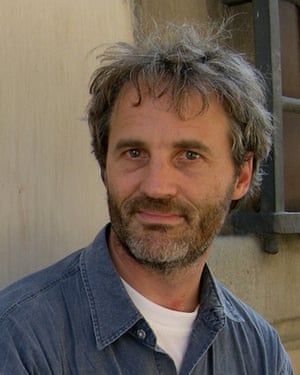[ad_1]
I was in my mid-20s when Cornell Capa, director of the International Center of Photography in New York, recommended me for a job documenting life in the American sector of Berlin while the city was still divided. As a young photographer, I was so nervous. All of these senior German officials were swanning around my studio inspecting my work.
I blurted out that I wasn’t American, that I was born in Canada, almost like a confession. I felt I had to tell them. They just looked at me quizzically, laughed and started speaking in German. I have no idea what they thought of me. But I got the job.
I went to West Berlin in 1982 to document what was called Mauerkrankheit, which roughly translates as “wall sickness”. It was a disorder, identified in Berlin, caused by the fact that you’re living in this divided city, surrounded by the tension between the Soviet and American sectors. It’s a slow-motion trauma that culminates in depression. I heard that nearly 10% of people living in the east were diagnosed with it.
In the west, I discovered a different side to the disorder. Every Saturday, punks would hang out, drink beer and blare music through their soundsystems. Cars would be set alight and bank windows smashed in. The cops would arrive, teargas them and send them running to find shelter in nearby bars, and the whole cycle would repeat. They were sceptical of me to begin with. One guy even headbutted me. In retrospect, I think that was a sign of acceptance.
Getting to know them wasn’t easy, and it happened in the strangest of ways. I would carry a bunch of bananas to snack on while I wandered the streets. When I found the punks, I didn’t know what to say, so I offered them bananas. They just laughed at me. But they must have liked it, because they welcomed me into their crew.
As I got to know them, I realised they fitted into the idea of the “wall sickness”, but they were the manic side of the depression that reigned in the east. There was something psychotic about punk at the time. These weren’t just weekend punks and “punk” wasn’t just a look – this was their life.
The woman in this shot was called Miriam, and the rat on her shoulder is called Bestia. It was a week or so before Reagan was planning to visit, and there were windows smashed all over the city in protest. Despite the violence and the militancy, she was extremely gentle. She was big, much bigger than me, but she had a soft way of gesturing and moving.
She invited me to her place, a nearby squat. We hung out, drank tea, took some shots and became friends. She introduced me to her rat, Bestia, wholived in her oven. Being a squat, it had no electricity, so it was perfectly safe. Bestia was almost like a guardian angel for Miriam, keeping her safe amid the anarchy. I think it was useful to keep guys off her back, too – nobody’s messing when you have a rat draped around your neck.
People feel this image represents a moment in Berlin’s history, or the punk movement more broadly, but to me it’s a shot of someone I got to know, who welcomed me into a hard-to-reach scene. It was a doorway for me into other activist and protest scenes, and I remember the time fondly.
People seem to think that punk has died, and maybe elements of the aesthetic have. But the spirit of punk was so much more than a look, and I think that lives on, albeit in different forms. I think we saw it in the Occupy movement, within elements of the Arab spring, and I think we are seeing it today in the UK with Extinction Rebellion.
Philip Pocock’s CV

Born: Ottawa, Canada, 1954.
Training: Film and television production, New York University.
Influences: Diane Arbus, Brassaï, the Capa brothers, Eikoh Hosoe, André Kertész, Dorothea Lange, Helen Levitt, Mary Ellen Mark, László Moholy-Nagy, Gordon Parks, Thomas Ruff, Aaron Siskind, Francesca Woodman.
High point: “My 1997 Documenta X commission, Germany.”
Low point: “A life-changing accident on a film set in 1979.”
Top tip: “Draw with your eyes. Think like a writer. Earn trust and befriend!”
[ad_2]
READ SOURCE


